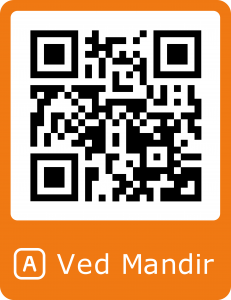Pravin: Namaste Swamiji, 1. Rudram and Chamakam are part of Yarjurveda? is there any verses exist in vedas actually? or is it part of vedanga?
2. Could you please provide the 6 shastras name and is Agnihotra the only yajna mentioned in veda. How to practise it? is it wise to practise it by reading a book alone or a guru/acharaya guide is needed?
Swami Ram Swarup: Namasteji.
1.) Rudram and Chamakam are not parts of Yajurved. However, in some mantras, rudra has been subject of the mantra. Neither verses exists in vedas nor the verses are part of vedang.
2.) Shastras
There are six shastras written by six Rishis. These are Yog shastra, Samkhya, Vedanta, Mimansa, Nyaye and Vaisheshik. Vedas are eternal and emanate direct from God. i.e., Vedas are direct from God and are originated in the heart of four Rishis at the time of beginning of the creation. That is why, Yog shastra 1/26 states that God is the first Guru of our ancient four Rishis. There is fundamental law which is unchangeable too that knowledge is only gained by somebody if it is given by somebody. At the time of beginning of the earth no Rishi Muni of the previous creation is alive to give the knowledge. So God always gives the knowledge of four Vedas to four Rishis of nonsexual creation. Thereafter Rishis recite Ved mantras and give knowledge to others. In this process when the Rishis became learned in this creation after getting knowledge of Vedas then they wrote Valmiki Ramayana/shastras/Upnishads/Mahabharat etc., based on the knowledge of Vedas. Now the saints have written spiritual books based on the knowledge of shastras/upnishads etc. However, Vedas are self proof being eternal knowledge from God. So in the spiritual books the matter according to Vedas is true and that which is against the Vedas is untrue.
Vedas state knowledge right from straw to Brahma. Therefore, every matter of universe which is seen or unseen by us exists in Vedas. So, the praise of yajyen has very well been mentioned in Yajurved and other vedas. One should therefore daily perform yajyen for the benefit of all living beings.
How to do havan
Please sit in the morning to perform havan. Havan must be performed in sunlight then it is more beneficial. Half a bowl of fresh water with a tablespoon must be with you with small twigs especially of mango tree if possible, havan samagri, ghee, camphor and match box must be there with you. Please sit on sukh asan on four times folded blanket and blanket must be kept on mat.
Sukh asan i.e., sit on duly folded feet in comfortable position. First close your eyes and concentrate between two eyebrows and chant Gayatri mantra three times within heart and not by mouth. Then open your eyes.
Take one spoon of water in right palm. Chant this mantra, OM AMRITO UPASTRANMASI SWAHA and drink the water which you have put in your palm. Then again take the spoon of water in right palm then chant the next mantra, OM AMRITA APIDHANMASI SWAHA, and drink the water. Then again take the water in right palm and chant the mantra, OM SATYAM YASHAH SHRI MAYI SHRI SHRAYTAAM SWAHA, and drink the water. Then wash the right palm while sitting, with the same water kept in bowl.
Now, put the twigs into havan kund with one piece of camphor and burn it. During this process chant the Gaaytri mantra again and again till such time the fire is lighted sufficiently. Then chant the Gayatri mantra and at the last add the word Swaha and offer ghee with tablespoon, quantity equivalent to 4 to 5 drops. And if you are alone then also offer in fire pinch of havan samagri from your right hand’s fingers and thumb avoiding forefinger. So this offering may be of 11 times, 21 times or 51 times as the time suits. It is the simplest way and I have not quoted the complete method of Yajyen. The havan with Ved mantras are always offered as the best worship of God only please. Do havan daily and both times.
Deeksha is essential for an aspirant. He must go to the residence of learned Acharya to get deeksha first.
Anupam: Bahut bahut dhanybad guruji.
Swami Ram Swarup: Bahut-Bahut ashirwad beti.

